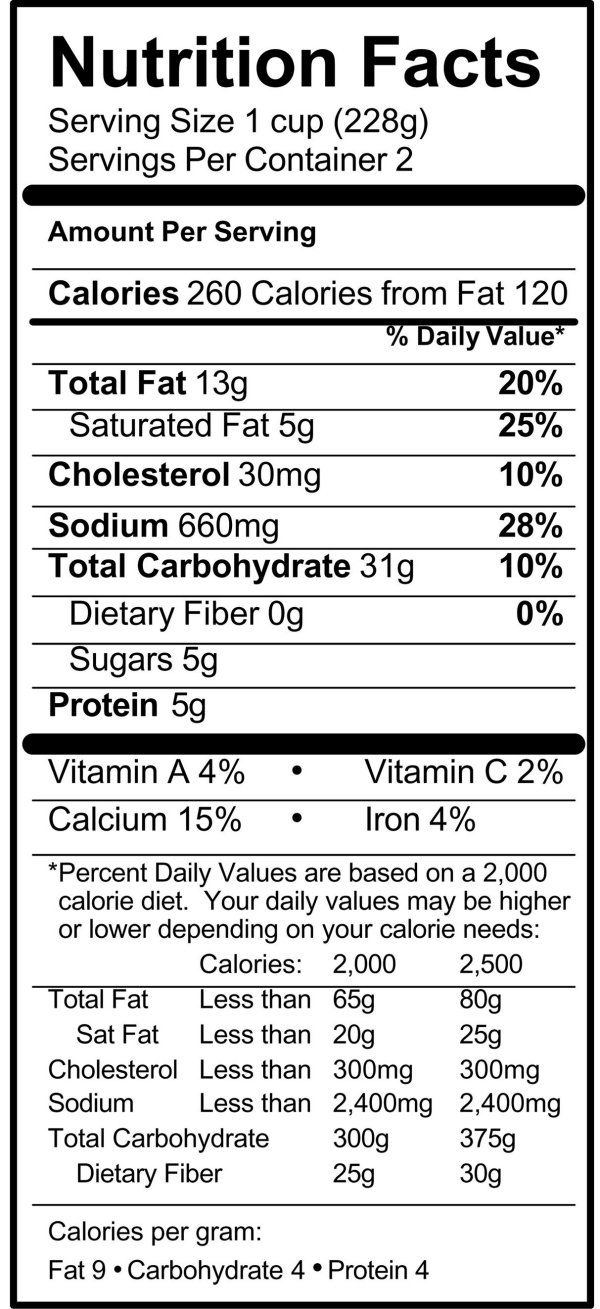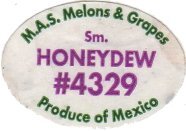

 Wikipedia Sitemap |
|
|  Useful Links 1 Useful Links 2 |

Our health is linked to our diet. How you feel tomorrow really is linked to what you eat today.
A century ago, it was simple; store items were few and perishable. Today's human is faced with thousands of bewildering choices on entering that store. Economics and convenience dictate choices. Health Canada brought in new rules for labeling our food almost a decade ago, but it remains confusing.
I encourage kids to grab scissors and to start collecting Nutrition Facts labels, charts and ingredient lists off food boxes as potential school projects. It is a great starting point to a weight loss solution. Once you have invested some time to do the initial ground work, it becomes very easy and recognizable after that.
Hint no. 1. The smallest print on the package is the most useful and truthful, while the largest print is the most misleading, for me. The Nutrition Facts label is a useful starting point and needs to be combined with the ingredients label. It requires some translation because nobody is going to label their product as "bad for you."
The first line usually indicates a serving size, and you have to decide if it needs to be doubled or not. This is followed by the number of calories, which is helpful in figuring out how much is in the whole meal you prepare.
In the Fat/Lipids section, you will see the Trans and Saturated fats listed. Both are bad, and we try to aim for a daily total of less than 20 mg. Fortunately, next to the totals is the % daily total, a very useful figure. The less Trans fat, the less heart disease, but this trick is used to sell cereals with heart prevention claims because it does not involve the carbohydrate count.
The Sodium value is your salt value and needs to stay low.
Carbohydrates include your sugars, and even though it lists the amount, it does not list the type. For that, you need to go through the ingredients list. I recommend avoiding high-fructose corn syrup which has largely replaced cane sugar in most foods. It is a difficult molecule for the body to digest.
Fruits also have stickers with codes containing four or five numbers. A four digit code tells you the fruit is raised conventionally in fertilized soils and may contain pesticide residue. A five digit code beginning with 8 refers to a genetically modified fruit, and a five digit code beginning with 9 indicates a fruit grown according to national organic standards. Keep those pesky stickers and put them with the other labels you collect.
By reviewing your cut-outs once a week, you will start to make progress towards intelligent food selection and diet. A useful resource that I use is the Nutrition Action Healthletter, a monthly 20-page color brochure which reminds me of an Archie Comic without ads, and full of practical tips.
Note: A few current articles in the Healthletter are free to view in PDF Canadian Edition or U.S. Edition.
 |
  |
Related resources:
● Using the Nutrition Facts Label: A How-To Guide for Older Adults.
● Changes to the Nutrition Facts Label.
● Food Labelling from Health Canada. Labelling on food helps Canadians make healthy and informed choices about the foods they buy and eat.
● Nutrition facts label from Wikipedia.
● Nutrition Labeling and Education Act of 1990 from Wikipedia.
● Labeling & Nutrition from U.S. Food and Drug Administration (FDA). Food Labeling and Nutrition web pages address labeling requirements for foods under the Federal Food Drug and Cosmetic Act and its amendments. Food labeling is required for most prepared foods, such as breads, cereals, canned and frozen foods, snacks, desserts, drinks, etc. Nutrition labeling for raw produce (fruits and vegetables) and fish is voluntary.
● Why You Shouldn't Buy Organic Based on the 'Dirty Dozen' List by Beth Skwarecki, Vitals, Life Hacker, 3 Mar. 2015.
●Nutrition Facts Table from Health Canada. The Nutrition Facts table gives you information on the amount of 13 core nutrients and calories in an amount of food. Use this information and the % Daily Value (% DV) to choose and compare food products for a healthier you.
● How to Understand and Use the Nutrition Facts Label. Consumer Information from U.S. Food and Drug Administration (FDA).
● Learn to Read Nutrition Facts Food Labels by Shereen Jegtvig, About.com Guide.
● How to read Canada's nutrition labels: Understand what they mean from CBC News Interactive.
● Use the Nutrition Facts Label from National Heart Lung and Blood Institute, National Institutes of Health (NIH). Use the Nutrition Facts label found on food packages to make smarter food choices.
● Balanced ENERGY IN: Smart Food Shopping from NIH. Learn how the label can help you choose foods lower in calories, fat, and added sugar to help maintain a healthy weight.
● How to Read a Nutrition Facts Label: Solving the Ninth Mystery of the World by Laura Bofinger, Staff Writer, SparkPeople.com.
● Nutrition Facts Labels, How to Read, FAQ, About Part 1. YouTube video, 10:40 min.
● Talking Fruit: How to de-code the information on those little stickers by Marion Owen, Fearless Weeder for PlanTea, Inc. and Co-author of Chicken Soup for the Gardener's Soul.
● What do the stickers on fruits and vegetables mean? from DontWasteTheCrumbs.com.
● Read the numbers on your fruit by David Askaripour.
● The World of Fruit Labels - PLU: Product Look-Up Numbers.
Compiled by Roger Harris, NationalFinder.com.
● PLU Codes (Numerical Order) from Innvista.com.
● GM Foods and PLU Codes. Posted by Chris MacDonald on Food Ethics Blog. ". . . the numeral “8? (in the 1st position of a 5-digit code) has in fact been set aside, (by the International Federation for Produce Standards) to designate GM (Genetically Modified) foods. But the code is entirely voluntary, and no one is actually using it."
● Guide to Food Labelling and Advertising from Canadian Food Inspection Agency.
● Commodity Specific Labelling and Advertising from Canadian Food Inspection Agency. Information on Labeling Requirements, Best Before Dating, etc. relating to: Food Additives, Alcoholic Beverages, Beverages for Athletes, Isotonic, Chocolate and Cocoa Products, Dairy Products, Eggs and Egg Products, Fats and Oils, Fish and Seafood, Foods for Special Dietary Use, Fresh Fruits and Vegetables, Grain and Bakery Products, Honey, Infant Foods and Infant Formulas, Meat and Poultry Products, Nuts, Peanut Butter, Processed Products: Fruits and vegetables, Retail Food, Salt, Sports Nutrition Products, Sweeteners and Sweetening Agents, Water: Mineral Water, Spring Water and Bottled Water.
●
How to Read Food Labels 101 by Sampson Quain, eHow Contributor.